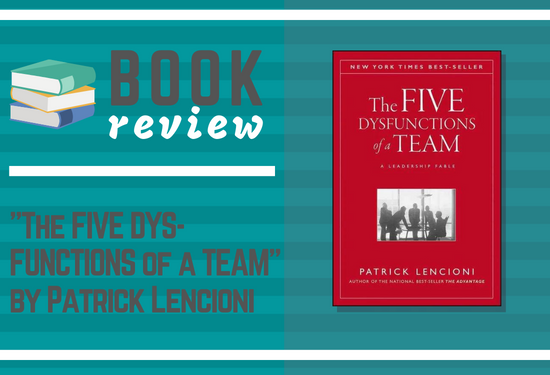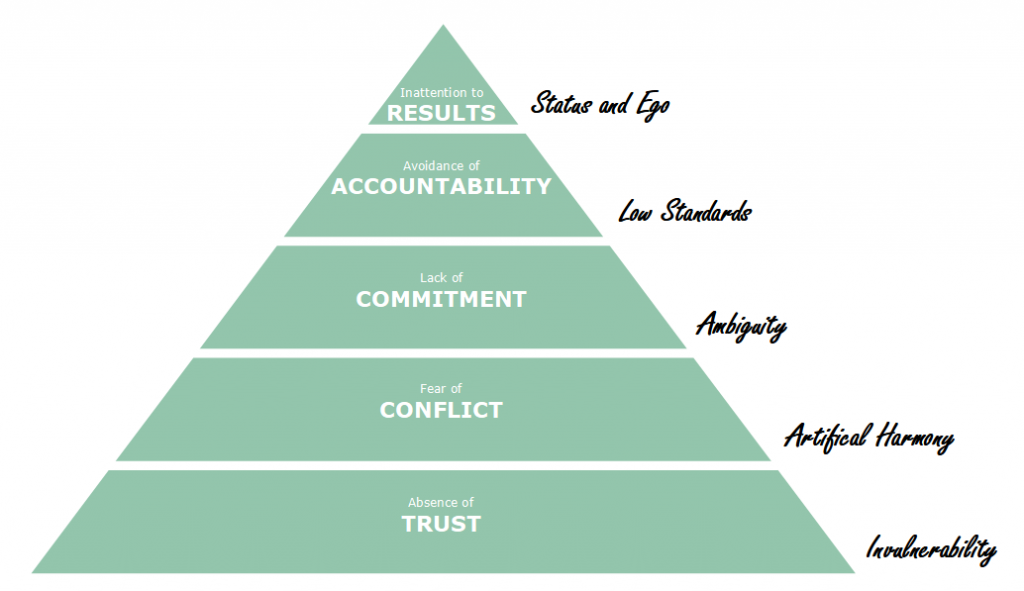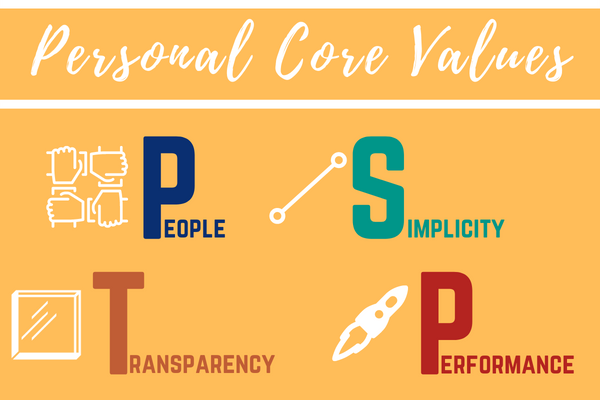
Book review
I heard a lot about the book “The FIVE DYSFUNCTIONS of a TEAM” by Patrick Lencioni previously and found it on a list named “The Best Company Culture Books To Read“. It felt like I should give it a try.
Book structure
The book’ content wraps around a really great story around executives of a virtual tech company in the Silicon Valey finding their way from being a wild group of individuals towards a real team. There is Kathryn, a really experienced CEO coming from a totally different industry background. Jeff, the former CEO and one of the founders – now looking after business development. The CMO, Mikey, a big-shot contributor with an incredible backlog of successes in the broader tech industry. The CTO, Martin, very strong opinionated person with a clear tech-nerdy attitude and among the founding team. The CSO, JR with also a quite huge list of successes on sales side – always increased revenues quarter over quarter. The Chief of Customer Support, Carlos – one of the buddies of Mikey and a quite silent person. The CFO, Jan, who is very carefully keeping the money of the company together and the COO, Nick, who was brought to the company to fix operations.
The story is a great read and I could sympathize with various characters right from the beginning. I could also see some parallels to some of my colleagues in leadership positions. So, the fictional story is not that fictional after all. The fictive CEO Kathryn is one of the CEO’s you would want to work for – or even better – being such a role-model as a C-Level yourself.
My learnings
Patrick wraps his learnings from working with teams in this story and gives some advice at the end of the book on how to overcome the described dysfunctions. Patrick talks on his website more about the details of the model: Teamwork: The Five Dysfunctions of a Team.
Nevertheless, I’ll sum up what I learned in the next brief paragraphs.
The book is a great read. I found myself in various situations and couldn’t agree more with Patrick on his observations on leadership teams. I had the pleasure to work with outstanding CEO’s in the past, myself. One of them being Martina Bruder, the CEO at my times at FriendScout24 and the other being Florian Geuppert the CEO at gutefrage.net. It has been great to be part of the team since these teams were build around trust. I, however, worked with other leadership teams as well and know the situations described by Patrick first hand.
So, go on, build you own opinion and enjoy the story Patrick Lencioni created!

Dysfunction #1 – Absence of Trust
Absence of Trust among team members is primarily due to their reluctance to show vulnerability in front of the group. It is impossible to establish a basis for trust when team members are not genuinely honest with one another about their mistakes and weaknesses.
Dysfunction #2 – Fear of Conflict
Being unable to establish trust is problematic because it supports Fear of Conflict. Teams lacking in trust are unable to have frank and impassioned discussions about their positions. Instead, they use secret conversations and cautious remarks to create an environment of artificial harmony.
Dysfunction #3 – Lack of Commitment
The absence of healthy conflict is a real issue because it makes Lack of Commitment more likely. Team members rarely, if ever, buy in and commit to decisions without first raising their viewpoints during intense and open debate, even though they may pretend to agree during meetings.Returning back to their teams these team members are more likely to defend their own opinions and increase ambiguity in leadership.
Dysfunction #4 – Avoidance of Accountability
Team members try to avoid accountability as a result of this lack of commitment and buy-in. Even the most motivated and dedicated people actually hesitate to confront their teammates about actions and behaviors that seem to be unfavorable to the success of their own team unless they have agreed to a clear plan of action.
Dysfunction #5 – Inattention to Results
Inattention to Results can develop in an environment where people fail to hold one another accountable. It happens when team members prioritize their own interests over the group’s objectives, such as ego, professional advancement, or recognition, or even the demands of their own divisions.







